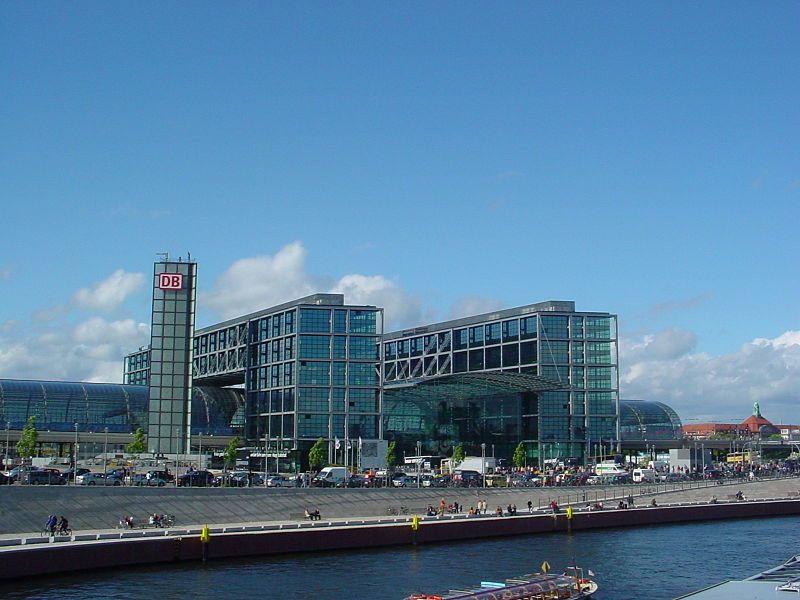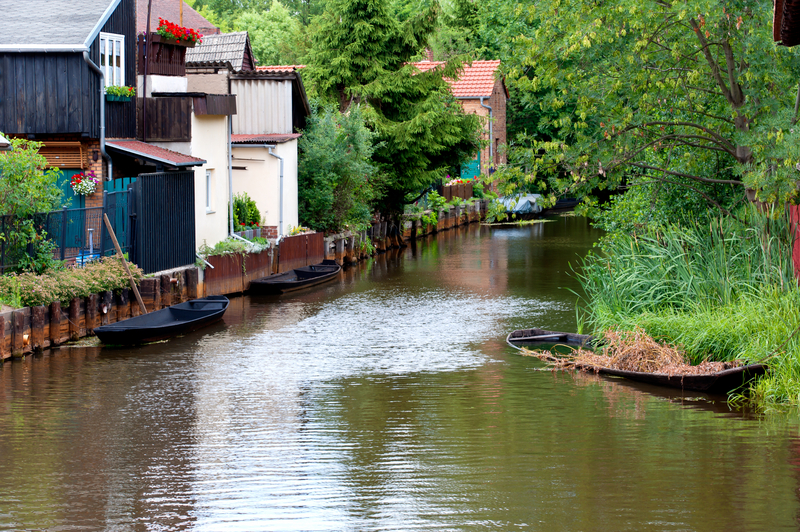First time travelers to Berlin Germany often wonder about getting around the city. Visitors will find that Berlin Train stations are conveniently located to hotels and apartments in Berlin making travel to and from Berlin as well as throughout the city easy. Berlin’s train stations have been modernized since German reunification. The stations provide up-to-the-minute service within Berlin and with other countries.
 Berlin Central Station, the Hauptbahnhof, is the primary railroad station in Berlin. It opened for service in May 2006 on the location of the celebrated Lehrter Bahnhof. It is part of the Category 1 stations of the operations of Deutsche Bahn.
Berlin Central Station, the Hauptbahnhof, is the primary railroad station in Berlin. It opened for service in May 2006 on the location of the celebrated Lehrter Bahnhof. It is part of the Category 1 stations of the operations of Deutsche Bahn.
Lehrter Bahnhof began service in 1871 as the last stop for the railroad that connected Berlin with Lehrte. This line served as the major east-west train in Germany. Another station, Lehrter Stadtbanhof opened to connect with the Stadtbanh, Berlin’s multi-track elevated rail line that serves both main and local traffic. All connect to the Berlin S-Bahn.
After the damage from World War II, the railway partially reinstated services, which then ended along with razing of the main station during the Cold War.
The reunification of Germany brought about the expansion of Berlin’s railroad system with the development of a new north-south line.
The station has two levels of tracks. The top stage has six tracks with two used by the Berlin S-Bahn. The lower stage of the station has eight tracks with four platforms plus another for the Berlin U-Bahn. The two levels do not have links between the tracks. Eighteen hundred trains stop at the station each day with approximately 350,000 passengers using the station.
The station hosts a variety of railroad services. Travelers are able to reach Berlin from many routes by using the Intercity, the Inter City Express, Regional Bahn, Regional Express, Euro City and the S-Bahn. In addition, international trains use the station, and the Sibirjak Express reaches the far-off cities of Astana, Kazakhstan and Novosibirsk, Russia. The upper section of the station has the east-west tracks that are part of the Berlin Staadtbahn with trains traveling to Cologne and Hanover. The lower area handles the north-south tracks with trips to Munich, Leipzig or Hamburg.
The U55, or Berlin U-Bahn, which opened in 2009, joins the Brandenburger Tor Station with the Central Station. The link to the Berlin Schonefeld Airport updates the connection with the New Berlin Brandenburg Airport in June, 2012. The length of the trip to the airport will be 30 minutes.
The principal stations of Berlin that have connections to the intercity and international trains are Hauptbahnhof, Berlin-Ostbahnhof, Berlin-Gesundbrunnen, Berlin-Spandau and Berlin-Sudkreuz. Other stations throughout the region are Berlin-Lichtenberg, Berlin Zoologischer Garten, Alexanderplatz, Friedrichstrasse and Potsdamer.
Berlin’s chief stations have been refurbished. They have ticket offices, lockers that are coin-operated and a baggage storage service. Some of the sites have information booths providing maps and timetables but not tickets. Many locations include stores, restaurants, and bathroom services. All of the station’s information pages have links to the timetables on-line in English found at German Railways bahn.de website.
With the modernization of Berlin’s train stations and service, visitors will find travel within Berlin to be convenient and comfortable from area Berlin apartments and hotels.
.









